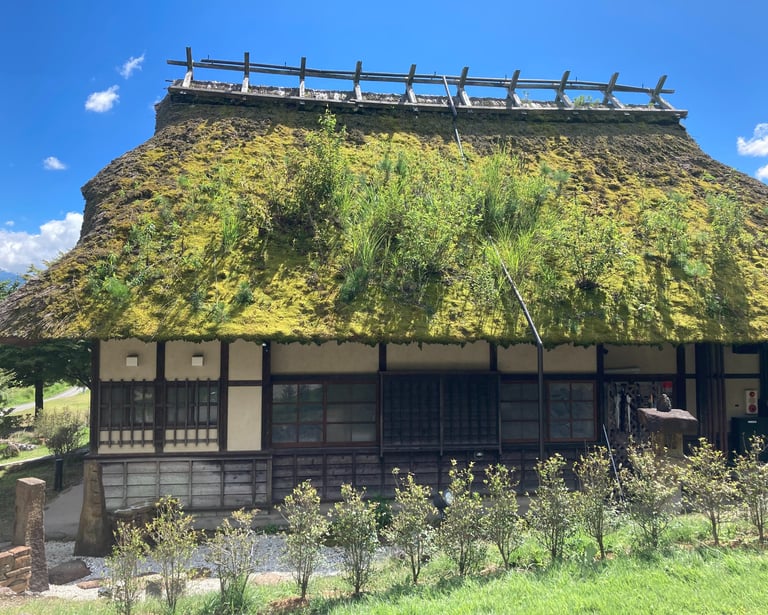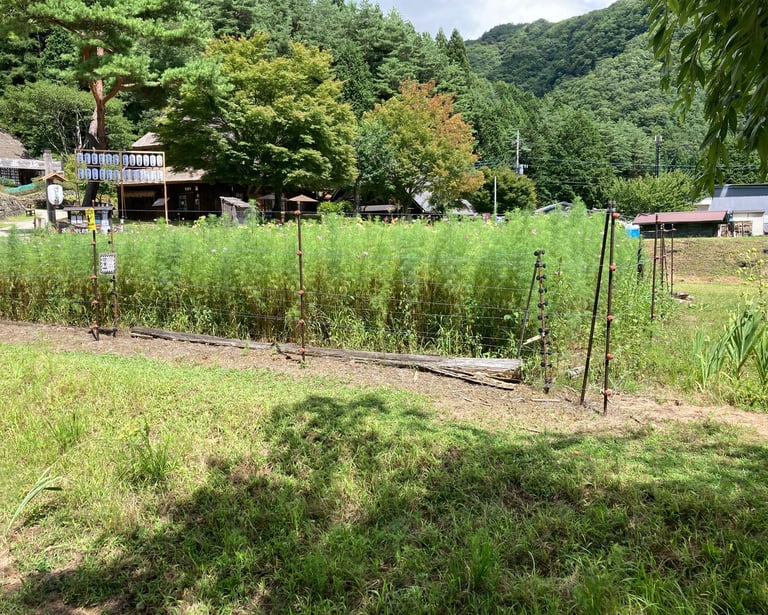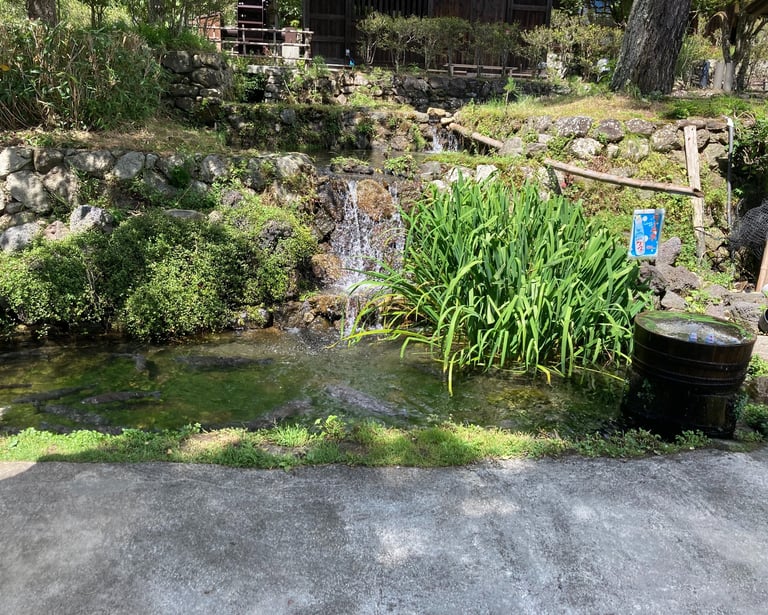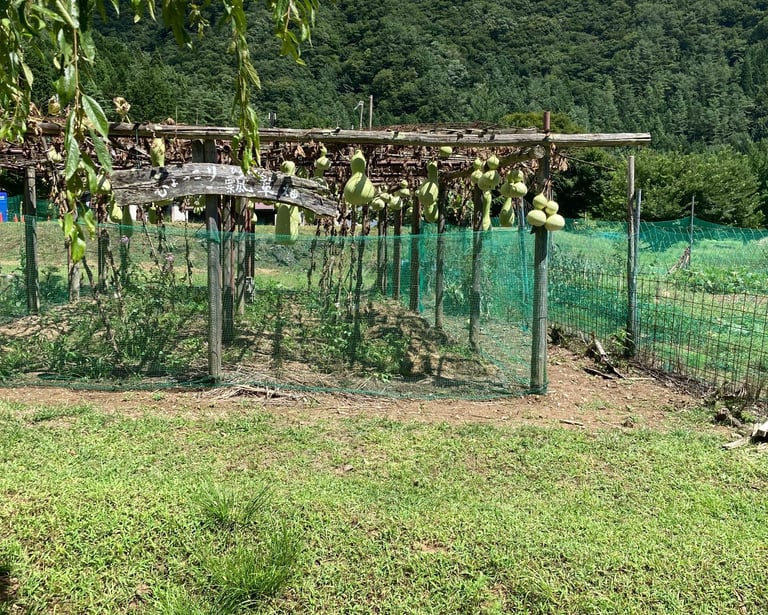What's Stopping You? Change Your Life!
A Day in Nenba
Healing at the Edge of the Storm
JAPAN
10/1/20254 min read
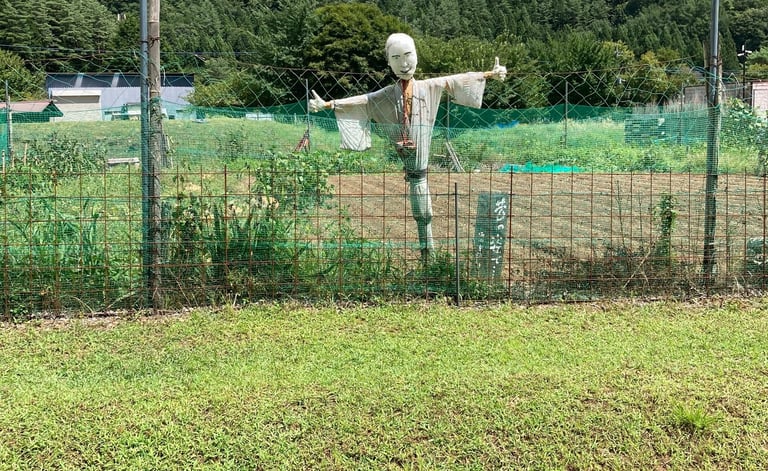

Originally, we had planned to spend several days in the Fujikawaguchiko area. But with Typhoon Shanshan (known in Japan as “Typhoon No. 10”) bearing down on us, we realized there were multiple sites we still wanted to visit that we simply wouldn’t have time for. These included the Mt. Fuji Panoramic Ropeway — a cable car up Mt. Tenjō with sweeping views of Fujisan and the lake — the Kawaguchiko Bat Cave (コウモリ穴, Kōmori-ana), and the Kawaguchiko Motor Museum / Airplane Museum. We promised ourselves we would return for those someday, and set off for our last stop of the day: Saiko Iyashi-no-Sato Nenba, the reconstructed thatched-roof village overlooking Lake Saiko. Another spot, as it turned out, we would also have to save for a future trip.
Before I go further, I should note that storms like Typhoon No. 10 are not rare in Japan. Many form around the Mariana Islands and drift west toward the Philippines or China, or north into Japan — this region is often called the “cradle of typhoons.” It’s important to be aware of these storms, as they can be both dangerous and destructive. Typhoon No. 10 formed over the Marianas on August 20 and made landfall in Japan on August 28, traveling nearly 1,800 miles. If you’re visiting Japan (and of course you have a smartphone — probably more than one), I recommend downloading WeatherJapan for day-to-day checks, plus Japan Official WeatherForecast, which provides real-time warnings from the JMA (Japan Meteorological Agency). Between the four of us, we had six smartphones — so we were well aware of the storm’s presence and adjusted our schedule accordingly.
After leaving the Ice Cave and deciding to skip the Bat Cave, we headed toward Saiko Iyashi-no-Sato Nenba — “Healing Village Nenba” on Lake Saiko. The original Nenba Shūraku was a small farming hamlet, but in 1966 a typhoon-triggered landslide buried the settlement, destroying many homes. Rather than rebuild as a normal village, the site was transformed into an open-air museum and cultural space: a place to preserve the memory of the hamlet while giving it new life as a center for healing, history, and tourism.
We said goodbye to our corn-flavored ice cream and boarded the Fujikyu Green Line bus, apparently once again driven by Takumi Fujiwara of Initial D. With practiced skill, he negotiated the sharp turns through the Aokigahara forest and across the plains. It’s about a twenty-minute ride, but since the bus only comes once an hour, he clearly had a schedule to keep.
Twenty minutes later we were in the parking lot of Iyashi-no-Sato. Past the vending machines, craft shops, and restaurants, a bridge led us over fields of working gardens — guarded, appropriately, by scarecrows. Once in the village, the traveler encounters a paradox common in Japan: how impermanence can be reshaped into continuity, how loss can transform into healing. The thatched houses were not rebuilt as replicas, but as something more purposeful. The word Iyashi — “healing” — was added to the name. Each house was dedicated to a craft: one for indigo dyeing, another for pottery, another for washi paper. Visitors are invited to sit, learn, and try their hands at traditions once woven into daily life. The disaster that destroyed Nenba was not forgotten, but folded into a new vision of resilience.
As we wandered through the recreated village, we didn’t feel like tourists so much as guests stepping into a living memory. It was hot and humid, yet the serenity of the setting — the scent of wood smoke, the earthy air — seemed to transcend the discomfort of the summer sun.
There were recreated shops and schools, homes with sunken hearths and tatami floors, and workers repairing thatched roofs in the same way it had been done for centuries. Each house offered a quiet encounter with craft and culture, from dyeing to pottery to paper-making.
At the back of the property, we spotted a small shrine on the hill. We decided to pay our respects and crawled up the narrow path, soon questioning our decision — until a local breezed past us in comfortable walking shoes, reminding us these were tough people.
The climb was worth it. Nestled into the hillside was a tiny shrine, dedicated to Ōnamuchi-no-Mikoto, also known as Ōkuninushi (大国主神, the “Great Land Master”), a deity of healing, agriculture, and good fortune. We were surprised by how much yen had been left as offerings; the coins were clean and recently dated, proof of the many who still make this climb. After a brief prayer, we asked for a safe descent.
On the far side of the village lies another shrine: Senoumi Jinja, dedicated to Toyotama-hime-no-Mikoto (豊玉姫命), a water goddess associated with rainfall. Easier to reach than the hilltop shrine, it still featured the narrow staircases that make an American size 10 hiking boot feel oversized.
By evening, we ate at one of the outside eateries, more like a chaya (teahouse) or sato no shokudō (village diner) than a restaurant. Most of the food was fish-based, so if fish isn’t your thing, bring snacks.
It had been a long day, and now it was time to head back to Narusawa and the hut. In the morning we would return to Ōta-ku, staying ahead of Typhoon No. 10. I can say without hesitation that a visit to Nenba is a must. The village and the people who keep it alive make it a solid 10/10 experience. There’s a small admission fee, but it’s easily worth more.
Back at the bus stop, we took one last ride with Takumi on the Fujikyu Green Line.
